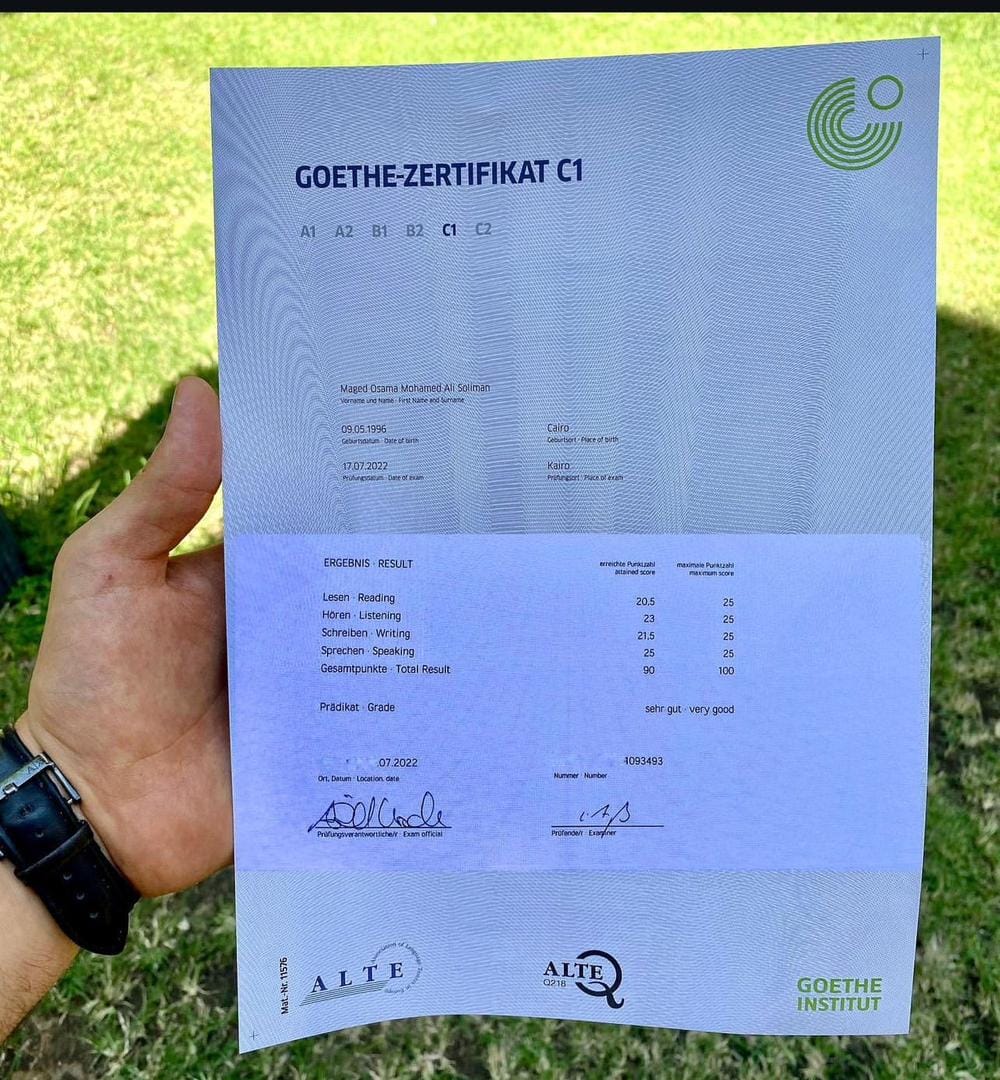A1 Certificate Buy Experiences Isn't As Tough As You Think
페이지 정보

본문
 A1 Certificate Updates and Common Issues
A1 Certificate Updates and Common IssuesAs the global workforce grows and changes and expands, ensuring compliance with international employment regulations is becoming more difficult. Recent updates to A1 requirements, along with the common issues, highlight the importance of a comprehensive understanding of these forms.
An A1 certificate is required if you travel to work in several European countries. But do you know when it's required and how to obtain one?
1. Getting Started
The A1 Certificate streamlines international work arrangements, offering an efficient and legally sound solution for businesses and employees who work across borders. The certificate guarantees that employees are not governed by the social security laws of more than one country, thus avoiding overpayments and administrative burdens. It is an obligation of law for any employee working in another EU country. It can be used by employees who travel to other countries on business, such as attending meetings, conferences or fairs.
The procedure for obtaining an A1 certificate is different from country to country, however the fundamental steps are the identical. The employee must first determine their eligibility and then submit the correct form to the appropriate authority. Included are the details of their country of origin as well as their employer and the destination country they will be working in. In most instances, it is easier to complete this form online. Then, employees must complete the form and submit the relevant documents to their country's social security authorities.
 After the A1 certificate is issued, it can be used in any country of the European Union. However, there are ways to simplify the process for those who travel frequently to multiple EU countries. If an employee or self employed person frequently engages in their work in three or more Member States and is able to apply for a permanent certification that allows them to pay into the system of their home country for up to a years.
After the A1 certificate is issued, it can be used in any country of the European Union. However, there are ways to simplify the process for those who travel frequently to multiple EU countries. If an employee or self employed person frequently engages in their work in three or more Member States and is able to apply for a permanent certification that allows them to pay into the system of their home country for up to a years.If you don't have an A1 certificate prior to embarking for a trip related to work could face fines. This is particularly relevant in France, Austria and Switzerland where the inspectors have recently announced an escalating series of inspections targeted at businesses that don't provide their employees with the necessary documentation. Local authorities can deny access to construction sites if, for example an employee is sent there without a valid A1 certificate. Employers and hosting companies who fail to provide their employees with A1 certificates also face fines. This is why it is crucial to begin the A1 certificate process as soon as possible.
2. Documentation
The A1 certificate is an essential document for those who travel to other countries frequently to work. The certificate proves that the worker is covered in his or her home country. This permits them to avoid paying social insurance premiums in other countries. This can save businesses lots of money in the long term. But, it's crucial for employers to be aware of what documents are required for their employees to obtain this form.
Employees who work abroad must possess an A1 certification in order to avoid fines and other penalties. This is especially important for project workers who may require a certificate when registering in hotels or attending conferences. It's also helpful to keep up-to-date with the most recent A1 certificate rules and regulations, since there have been recent changes that could impact the way this process is conducted.
The main purpose of the A1 certificate is to protect against social dumping. This happens the case when a worker is posted in a different European Union member state without being properly covered under the social security system of their home country's system. The A1 certificate is designed to prevent this by showing that a worker is covered in their home country. Civil servants, employees and self-employed individuals must get an A1 certificate when they are posted to an EU member state or Iceland, Norway, Liechtenstein or Switzerland for work purposes.
A1 certificates are usually issued by the statutory insurance provider of the person who is concerned. The form is basically an email that contains details such as the person's name and address. It also contains a special area which lists the country in which the person plans to travel for work, and an explanation of the nature of work to be carried out there.
For instance for employees who are traveling to the UK for work, they need to include information about their daily schedule and income-generating activities within the country. Keeping detailed time and location records will help to ensure that the person is eligible to receive an A1 goethe certificate in the event that local authorities have any concerns.
3. Payment
A1 Certificates are proof that employees pay into the social security system of their home country while temporarily working in another European country. This helps avoid wage and social dumping when short-term cross border assignments are arranged. Employers also have the ability to avoid double contributions in cases of overlapping placements in several countries.
It is generally recommended to get employees started on the process of obtaining an A1 form as soon as they realize that they are required to travel abroad. Depending on the country it is possible for a worker to obtain an A1 form in the two weeks after they begin their overseas assignment.
The A1 form requires a large deal of detail regarding an employee's employment status and Goethe Zertifikat B2 kaufen goethe institut zertifikat A2 Kaufen Testdaf Zertifikat online (link homepage) current job. It should also contain the dates on which an employee will be on assignment abroad. The information must be correct otherwise you risk a fine.
Many companies use an A1 Certificate to make it easier for employees to travel between European countries. This is particularly true for companies that operate in a region where different languages are commonly utilized. This certification will ensure that employees are able to communicate with clients in the language of the country they are working in.
A1 forms are also crucial for contractors and freelancers who work on short-term projects in other EEA countries. For instance, suppose that a graphic designer from Manchester is offered a six-month contract with a company in Italy. If she obtains an A1 certification, she can continue paying her UK National Insurance Contributions and not have to make any additional payments in Italy.
It is also important to remember that it is possible for an employee to lose their A1 certification when they fail to maintain its validity during their time abroad. It is important to renew an A1 form as soon as it expires.
The procedure of obtaining an A1 form can be a lengthy one and is based on the legal nuances and requirements of the employee's home country as well as the host country. GoGlobal simplifies the process, leading clients through each step of the process, and making sure that all documentation is in line with the regulations.
4. Delivery
The A1 certificate is essential in ensuring that employees who work in EU countries receive the correct treatment. This includes non-EEA countries which have a treaty with the EU including Norway and Switzerland. Despite the UK's withdrawal from the EU however, these rules remain in place. It is important that companies that send their employees abroad are aware of and have a full knowledge of the A1 requirements. This is due to the fact that there have been major changes to the application process and goethe Certificate also common issues that applicants face.
CIBT Assure streamlines the A1 process, reducing the risk of compliance for clients. CIBT Assure provides expert guidance throughout the entire process, ensuring that each employee submits their application with no errors. CIBT Assure’s automated, secure electronic tracking and application system reduces the amount of time needed to complete each submission. HR teams can integrate the application seamlessly with their existing HR and payroll systems to automate data entry and real-time updates.
CIBT Assure simplifies the A1 process and offers a range of tools and resources that aid employees in understanding the. From a dedicated support staff to a free mobile app and comprehensive guidebook, employees can keep track of the process and receive timely status updates and reminders. A central portal also gives a consolidated view of the status of every A1 submission.
For employees For employees, for employees, the CIBT Assure guidebook outlines the entire process from beginning to finish, providing helpful tips and best practices. It also provides guidelines on when to submit each type of A1 application. It helps employees recognize their status as detached workers or multi-state workers and identify any problems with the information they've provided to HMRC.
The A1 process is a complicated and time-consuming process, particularly for employees who navigate it on their own. For this reason, it's important for employees to use an expert who can manage the process on their behalf. This will reduce their risk of error and ensure that they will continue to be covered from the social security organization in their home country even if they are they are in the EU. The risk-free A1 Certificate cheat sheet from CIBT Assure is a great source of processing tips, common problems and practical solutions.
- 이전글7 Simple Strategies To Completely Making A Statement With Your Test ADHD In Adults 24.12.21
- 다음글How To increase Energy: Final Information To Getting Strong 24.12.21
댓글목록
등록된 댓글이 없습니다.